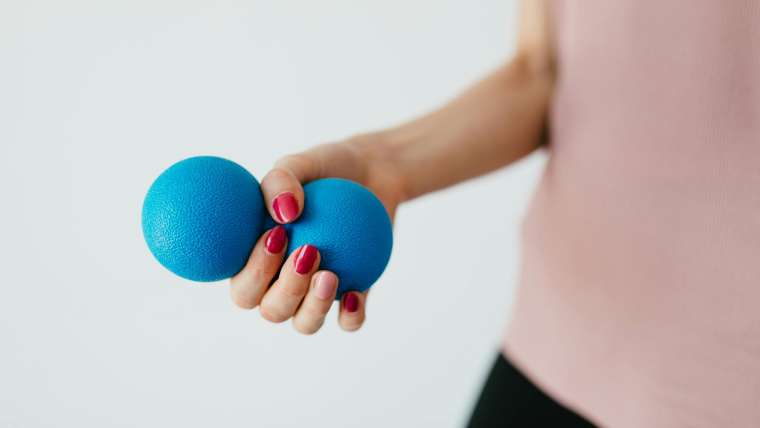Discover the simple yet effective 5-step method to lower your LDL cholesterol levels and improve your heart health today!
Table of Contents
- Introducing Cholesterol: Friend or Foe?
- Recognizing the Dangers of High LDL Cholesterol
- Kick-Start Your Heart Health: Step 1 – Smart Food Choices
- The Omega Power-Up: Step 2 – Include Omega-3s in Your Diet
- Move It to Lose It: Step 3 – Get Active
- Portion Control: Watch Your Serving Sizes
- Family Teamwork: Involve Your Family
- Bust that Fatty Liver: Bonus Tips
- Making It Stick: Turning Steps Into Habits
- Wrapping Up: Your Journey to Lower LDL Cholesterol
- Frequently Asked Questions (FAQs)
Introducing Cholesterol: Friend or Foe?
Cholesterol is a substance that can be a bit tricky to understand. It’s kind of like a friend that you need in some ways but can cause trouble if you have too much of it. Let’s dive into what cholesterol is all about and why it’s crucial to keep it in check.
What is Cholesterol?
Cholesterol is a type of fat that is found in your blood and every cell in your body. It might sound weird to think about fat being essential, but cholesterol plays a crucial role in your body. It helps build cell walls, make certain vitamins, and create hormones that help your body work properly.
Understanding LDL Cholesterol
There are different types of cholesterol, and one of them is called LDL cholesterol, which stands for Low-Density Lipoprotein. LDL cholesterol is often referred to as ‘bad’ cholesterol because if you have too much of it, it can start to build up in your arteries, making it harder for blood to flow through. This can eventually lead to serious heart problems, like heart disease. So, even though your body needs some cholesterol to stay healthy, it’s essential to keep an eye on those LDL levels.
Recognizing the Dangers of High LDL Cholesterol
When it comes to our health, keeping an eye on our cholesterol levels is crucial. High LDL cholesterol, also known as the “bad” cholesterol, can pose serious risks to our well-being. Let’s dive into the dangers of having high levels of LDL cholesterol and what it can mean for our bodies.
Blocked Arteries and Heart Disease
One of the biggest dangers of high LDL cholesterol is the risk of blocked arteries and heart disease. When there is too much LDL cholesterol circulating in our blood, it can start to build up in the walls of our arteries. This build-up forms plaque, which can eventually lead to narrowed or blocked arteries. If the blood flow to our heart is restricted due to blocked arteries, it can result in heart disease, heart attacks, or strokes.
Other Health Issues
High LDL cholesterol doesn’t just affect our heart health. It can also contribute to other health problems such as fatty liver disease. When there is an excess of LDL cholesterol in the bloodstream, it can also accumulate in the liver, leading to fatty liver disease. This condition can cause inflammation and scarring of the liver, impacting its ability to function properly.
Being aware of the dangers of high LDL cholesterol is the first step in taking control of our health. By making positive changes to our diet and lifestyle, we can work towards reducing our LDL cholesterol levels and protecting our overall well-being.
Kick-Start Your Heart Health: Step 1 – Smart Food Choices
When it comes to making smart food choices to lower your LDL cholesterol and keep your heart healthy, there are plenty of delicious options to choose from. Remember to include plenty of fruits, vegetables, whole grains, and lean proteins in your meals. These foods are not only nutritious but can also help lower your cholesterol levels and keep your heart strong.
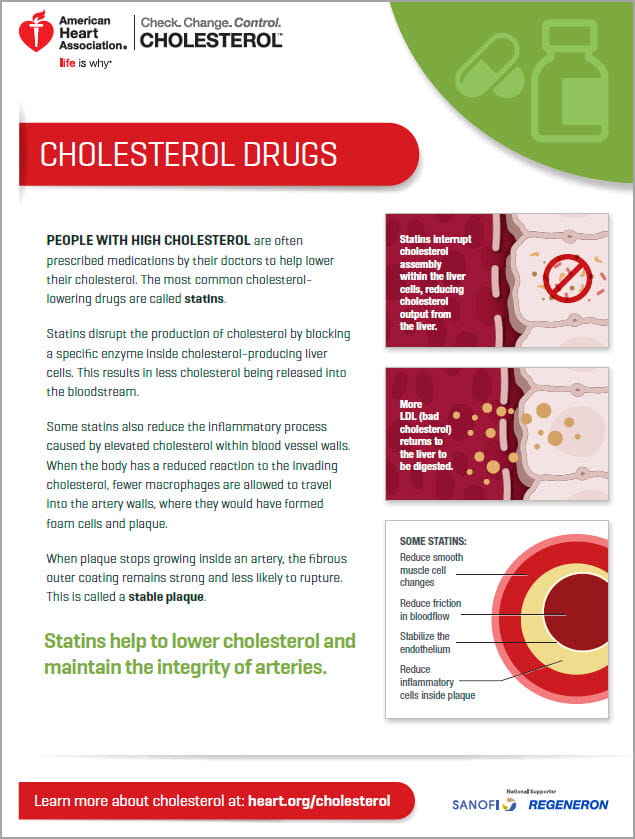
Image courtesy of www.heart.org via Google Images
Foods to Break Up With
Unfortunately, not all foods are as heart-friendly. It’s important to limit or avoid certain foods that can raise your LDL cholesterol levels and harm your heart health. Foods high in saturated and trans fats, like fried foods, processed snacks, and fatty cuts of meat, should be on the breakup list. By steering clear of these unhealthy choices, you can help lower your cholesterol and protect your heart.
The Omega Power-Up: Step 2 – Include Omega-3s in Your Diet
Omega-3 fatty acids are like the superheroes of the food world when it comes to lowering LDL cholesterol and keeping your heart healthy. These healthy fats can be found in certain types of fish like salmon, mackerel, and sardines. If you’re not a fan of fish, don’t worry, you can also get omega-3s from plant-based sources such as flaxseeds, chia seeds, and walnuts. Adding these foods to your diet can help boost your omega-3 intake and fight off bad cholesterol.
Move It to Lose It: Step 3 – Get Active
Being active is not just good for fun; it’s also incredible for your health! When you move your body, you help your heart stay strong and healthy. So how can you get moving in a way that’s fun and exciting? Here are some ideas:
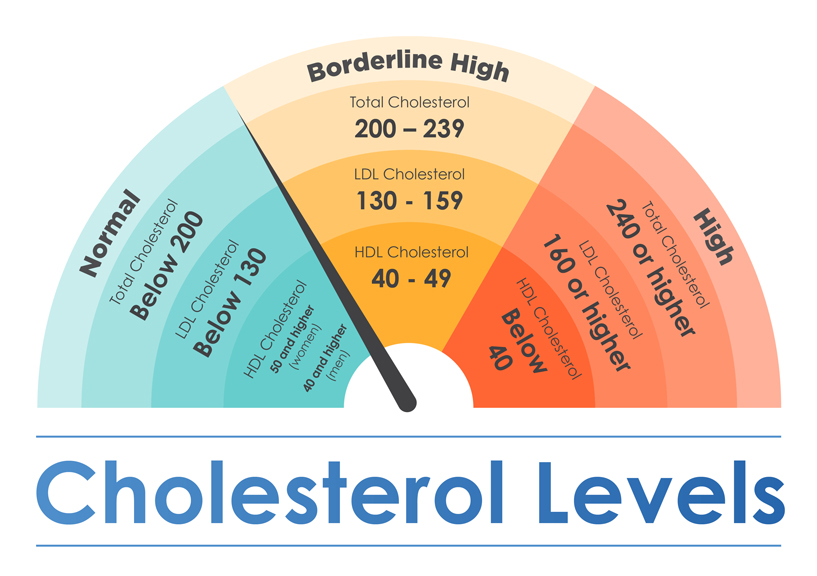
Image courtesy of my-doc.com via Google Images
1. Bike Riding: Hop on a bike and pedal around your neighborhood or a nearby park. Feel the wind in your hair as you ride!
2. Dance Party: Put on your favorite music and have a dance party in your living room. Dance like nobody’s watching! It’s a great way to get your heart pumping.
3. Jump Rope: Grab a jump rope and start jumping! It’s a fantastic way to get some exercise and have a blast at the same time.
4. Play Sports: Join a sports team or grab some friends for a game of soccer, basketball, or tag. Being active with others can make it even more enjoyable.
5. Explore Nature: Take a hike in a nearby park or go for a nature walk. Breathe in the fresh air and admire the beauty of the outdoors while getting some exercise.
Remember, the key is to find activities that you love so that being active doesn’t feel like a chore. Whether it’s playing your favorite sport or dancing around your room, the most important thing is to keep moving and have fun doing it!
Portion Control: Watch Your Serving Sizes
One important way to lower your LDL cholesterol levels is by watching your serving sizes. That means paying attention to how much food you put on your plate and making sure it’s the right amount for your body.
Understanding Portion Sizes
When it comes to portion sizes, bigger isn’t always better. Eating too much can lead to weight gain, which can raise your LDL cholesterol levels. Here are some tips to help you figure out the right portions:
1. Use your hand as a guide: Your palm can help you estimate the size of a protein portion, while your fist can help with carbohydrates like rice or pasta.
2. Focus on filling your plate with colorful veggies: Vegetables are low in calories and high in nutrients, making them a great option for keeping your portions in check.
3. Be mindful of portion distortion: Restaurant meals and packaged snacks often come in larger sizes than what you really need. Try splitting a meal with a friend or portioning out snacks ahead of time.
By keeping an eye on your serving sizes, you can help manage your LDL cholesterol levels and keep your heart healthy.
Family Teamwork: Involve Your Family
Teamwork makes the dream work, especially when it comes to staying healthy as a family. By involving everyone in making positive changes, you can support each other in lowering LDL cholesterol and promoting heart health for all. Here are some ways to get your family on board:
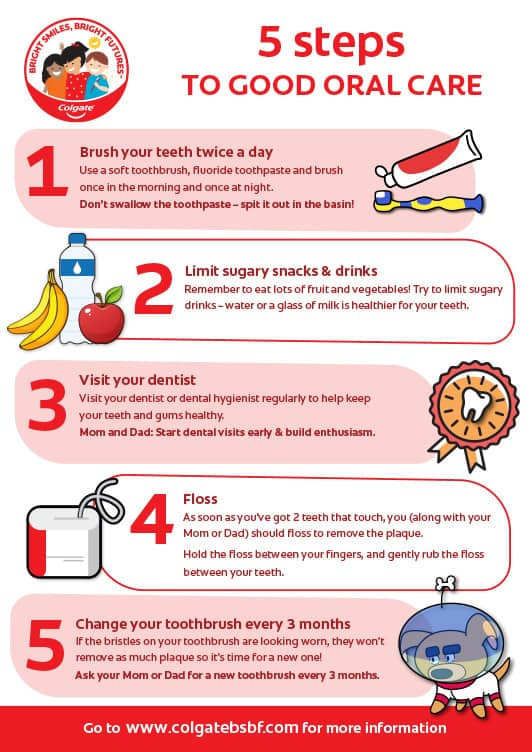
Image courtesy of www.colgate.com via Google Images
Team Up for Health
Encourage your family members to join forces in making healthy choices. Planning meals together, going for walks as a family, and celebrating small victories can create a supportive environment where everyone is invested in better heart health. Remember, a healthy family is a happy family!
Bust that Fatty Liver: Bonus Tips
What is a Fatty Liver?
A fatty liver is when there is an accumulation of fat in the liver cells. This can happen due to various reasons, such as poor diet, excessive alcohol consumption, or certain medical conditions. When the liver has too much fat, it can lead to health issues like high cholesterol levels.
Tips to Protect Your Liver
To keep your liver healthy and avoid fatty liver, you can make some simple lifestyle changes:
1. Healthy Diet: Eating a balanced diet rich in fruits, vegetables, whole grains, and lean proteins can help prevent fatty liver. Limiting processed foods, sugary drinks, and saturated fats is also important.
2. Stay Active: Regular exercise not only helps lower cholesterol levels but also benefits your liver health. Aim for at least 60 minutes of physical activity every day.
3. Limit Alcohol: Excessive alcohol consumption can contribute to fatty liver disease. If you choose to drink, do so in moderation and consider alcohol-free days each week.
4. Stay Hydrated: Drinking plenty of water helps your liver function properly and flush out toxins. Aim for at least 8-10 glasses of water per day.
5. Get Enough Sleep: Lack of sleep can impact your liver health and even lead to fatty liver disease. Aim for 8-10 hours of quality sleep each night.
By incorporating these tips into your daily routine, you can protect your liver and lower your risk of developing fatty liver, ultimately helping to manage your cholesterol levels and maintain overall heart health.
Making It Stick: Turning Steps Into Habits
So, you’ve learned about the important steps to lower your LDL cholesterol levels, but how do you make sure you stick to these changes for the long haul? Let’s talk about some strategies to help turn these steps into habits that will benefit your heart health in the long run.
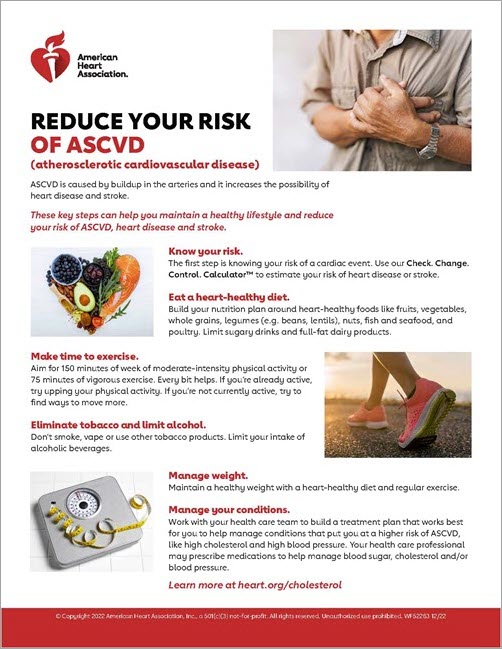
Image courtesy of www.heart.org via Google Images
Create a Routine
To make these healthy habits stick, it’s essential to create a routine. Set specific times each day for activities like taking a walk, eating your omega-3 rich foods, or practicing portion control. By making these actions a regular part of your day, they will become second nature in no time.
| Step | Description |
|---|---|
| 1 | Adopting a heart-healthy diet by reducing saturated fats and cholesterol intake |
| 2 | Incorporating more fiber-rich foods such as fruits, vegetables, whole grains, and legumes |
| 3 | Engaging in regular physical activity to improve heart health and lower LDL cholesterol levels |
| 4 | Quitting smoking and limiting alcohol consumption |
| 5 | Managing stress levels through meditation, yoga, or other relaxation techniques |
Reward Yourself
Don’t forget to reward yourself for sticking to your new habits! Whether it’s a small treat, a fun activity, or just some extra time relaxing, celebrating your accomplishments can help reinforce the behavior you want to continue. Positive reinforcement goes a long way in creating lasting habits.
Get Support
It’s easier to stick to your goals when you have the support of others. Share your journey with your family or friends, and consider doing activities together that align with your heart-healthy habits. You can also join a support group or find an accountability buddy to keep you motivated and on track.
By following these strategies and staying committed, you can turn these steps into lifelong habits that support your heart health and overall well-being. Remember, small changes can lead to big results over time, so keep at it and stay focused on your goals!
Wrapping Up: Your Journey to Lower LDL Cholesterol
Throughout this blog post, we’ve explored the world of cholesterol, particularly LDL cholesterol, and its impact on our health. By understanding what cholesterol is and how it can affect us, we’ve taken the first step towards a healthier lifestyle.
What is Cholesterol?
Cholesterol plays a vital role in our bodies by helping build cells, create hormones, and produce essential vitamins. It’s a necessary component for our overall well-being.
Understanding LDL Cholesterol
LDL cholesterol, often known as “bad” cholesterol, can lead to health issues like blocked arteries and heart disease if levels are too high. Keeping it in check is crucial for our heart health.
Smart Food Choices
By making better food choices and opting for heart-healthy options, we can lower LDL cholesterol levels. Remember to include plenty of fruits, vegetables, whole grains, and lean proteins in your diet.
The Omega Power-Up
Don’t forget to include omega-3 fatty acids in your meals. These healthy fats can help reduce LDL cholesterol levels and support your heart health.
Move It to Lose It
Staying active is another key step in lowering LDL cholesterol. Try to find fun ways to move more, whether it’s playing sports, dancing, or going for a bike ride.
Portion Control
Watching your serving sizes is essential for managing LDL cholesterol levels. Be mindful of how much you eat and try to stick to appropriate portions to support your heart health.
Family Teamwork
Getting your family involved in these lifestyle changes can make the journey to lower LDL cholesterol more enjoyable and sustainable. Support each other and make healthy choices together.
As you embark on this journey to lower your LDL cholesterol and improve your heart health, remember that small changes can lead to significant benefits in the long run. Stay committed, stay active, and prioritize your well-being every day.
Frequently Asked Questions (FAQs)
Addressing common questions that readers might have about LDL cholesterol and how to lower it.
Can Kids Have High Cholesterol?
Yes, kids can have high cholesterol levels. While it’s more common in adults, children can also be affected, especially if they have a family history of high cholesterol or certain health conditions. It’s essential to keep an eye on children’s cholesterol levels by having them tested regularly to catch any potential issues early on. Making healthy lifestyle choices from a young age can help prevent high cholesterol and promote heart health.
Are there Signs of High Cholesterol in Kids?
Unlike adults, children usually do not show visible signs of high cholesterol. This is why regular cholesterol screenings are vital, even for kids. Some genetic conditions can lead to high cholesterol levels in children, so it’s crucial to monitor and manage their cholesterol through healthy eating habits and physical activity. By being proactive, parents can help ensure their children’s overall health and well-being.




